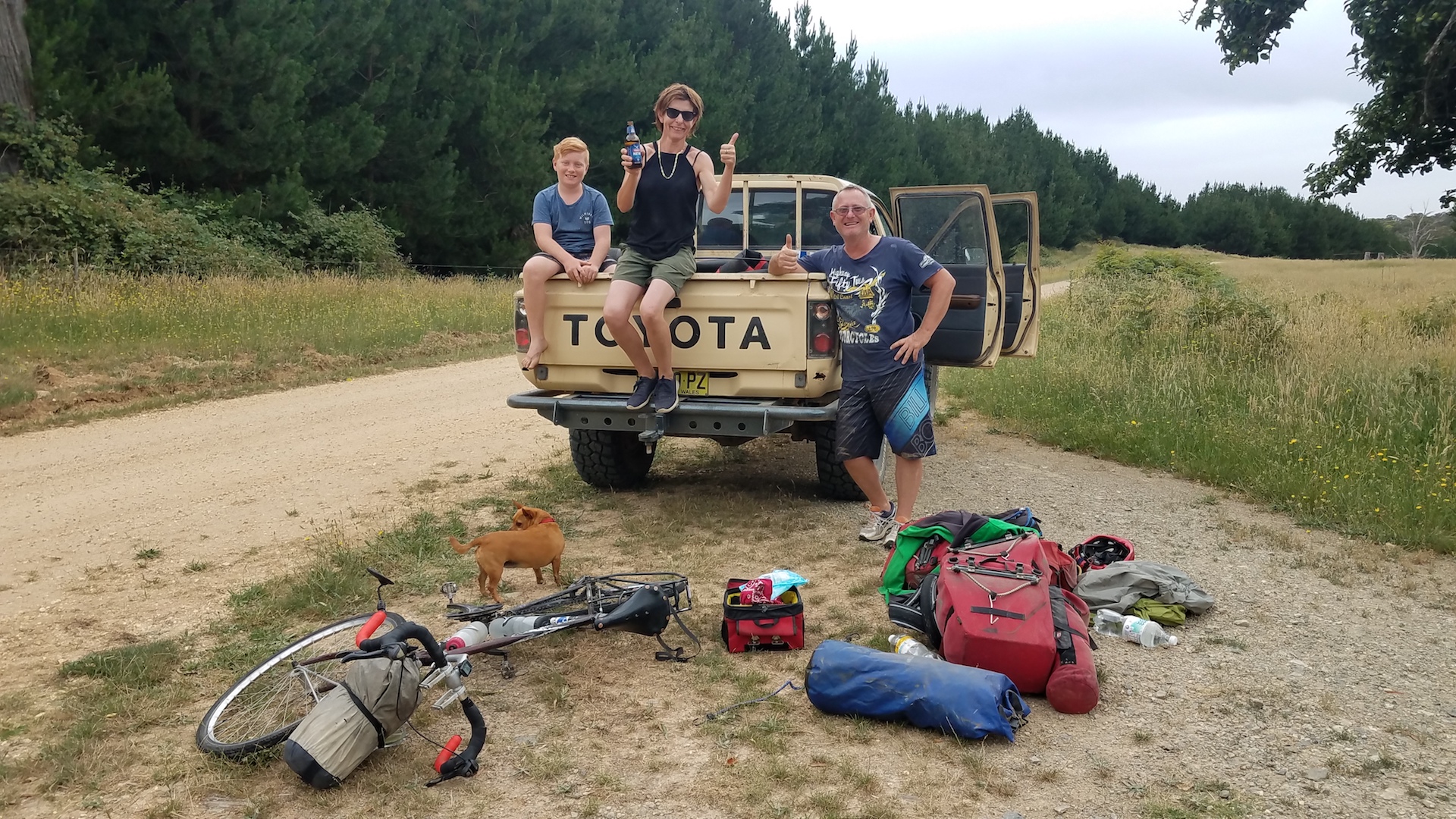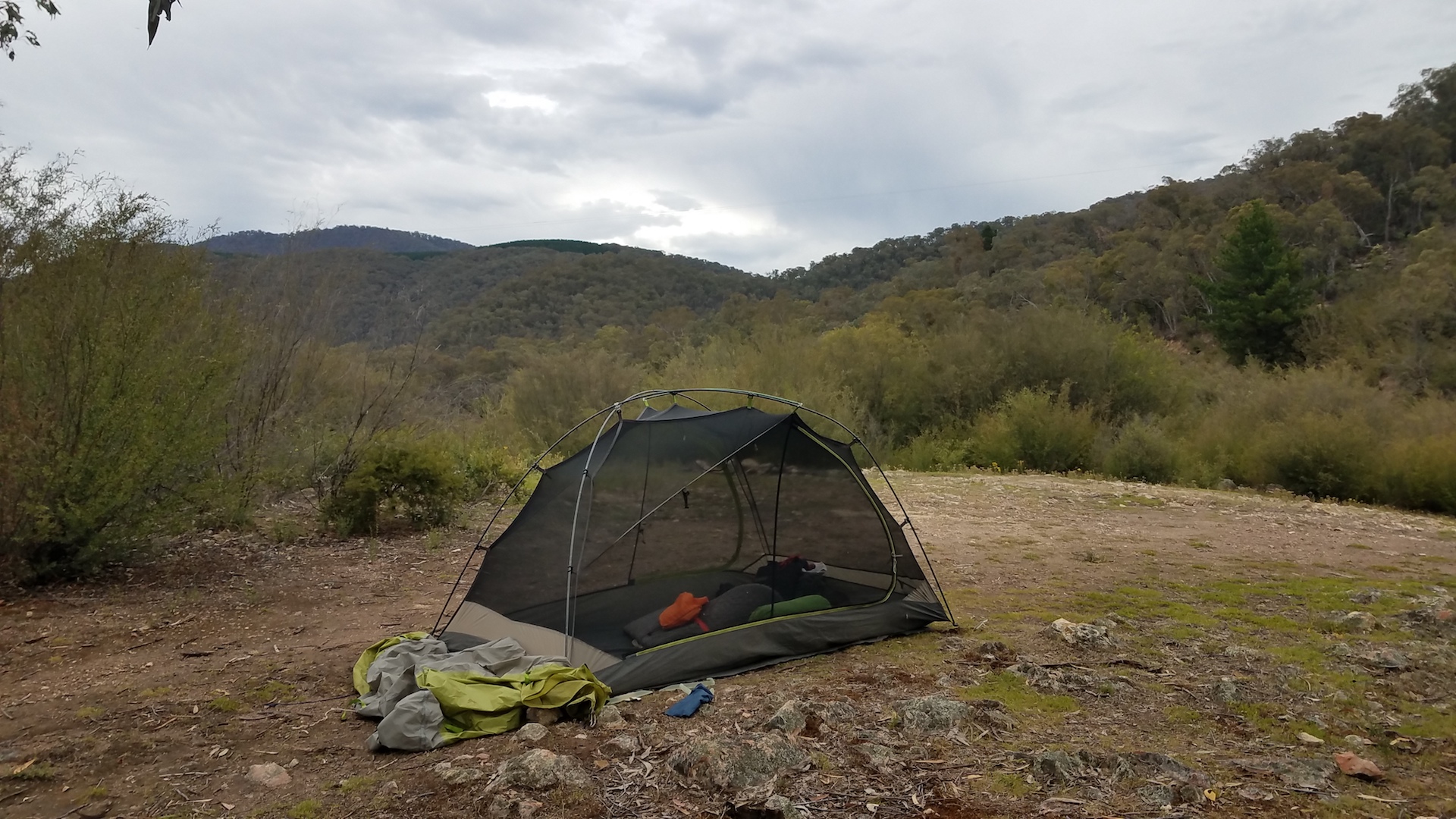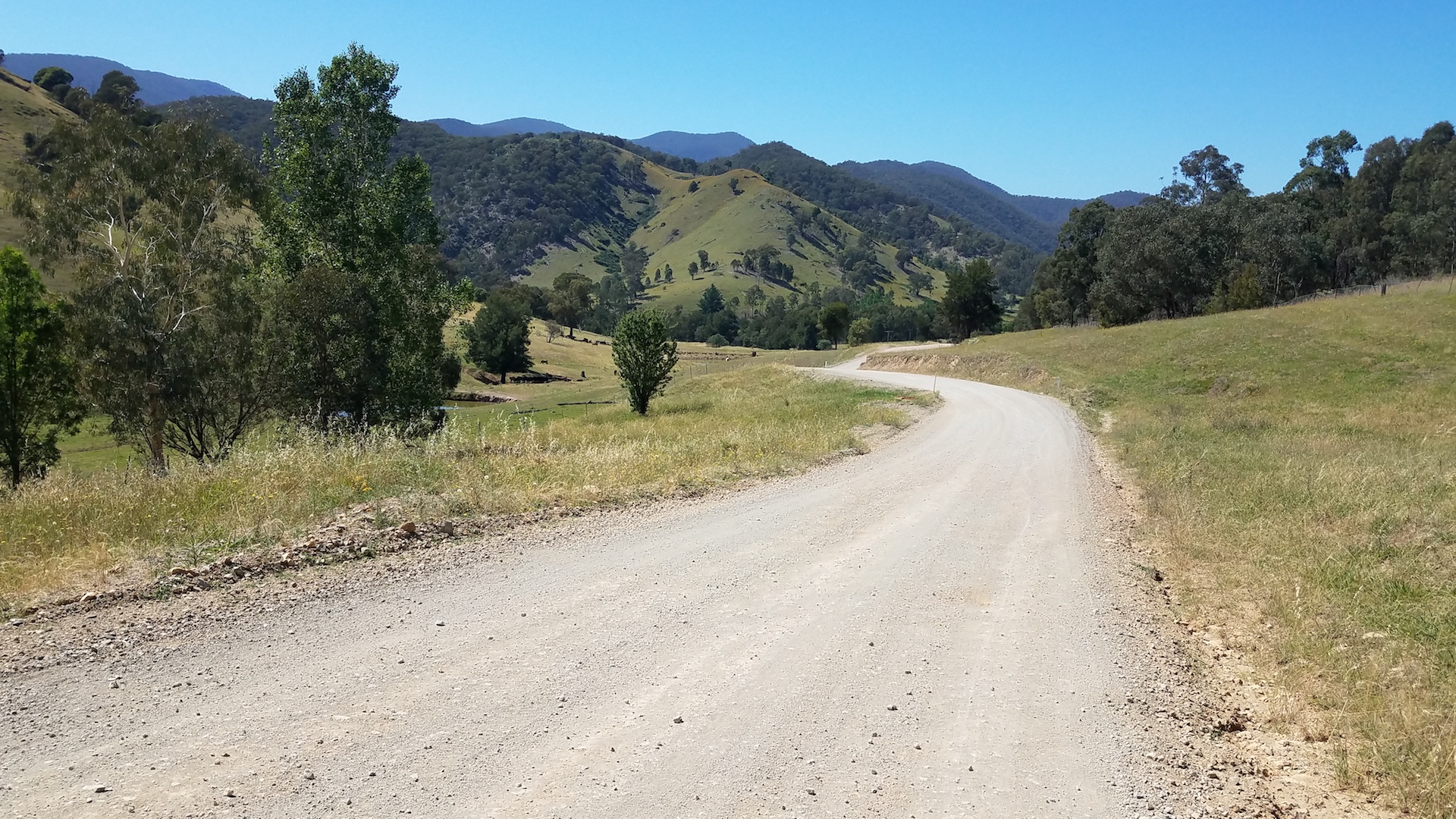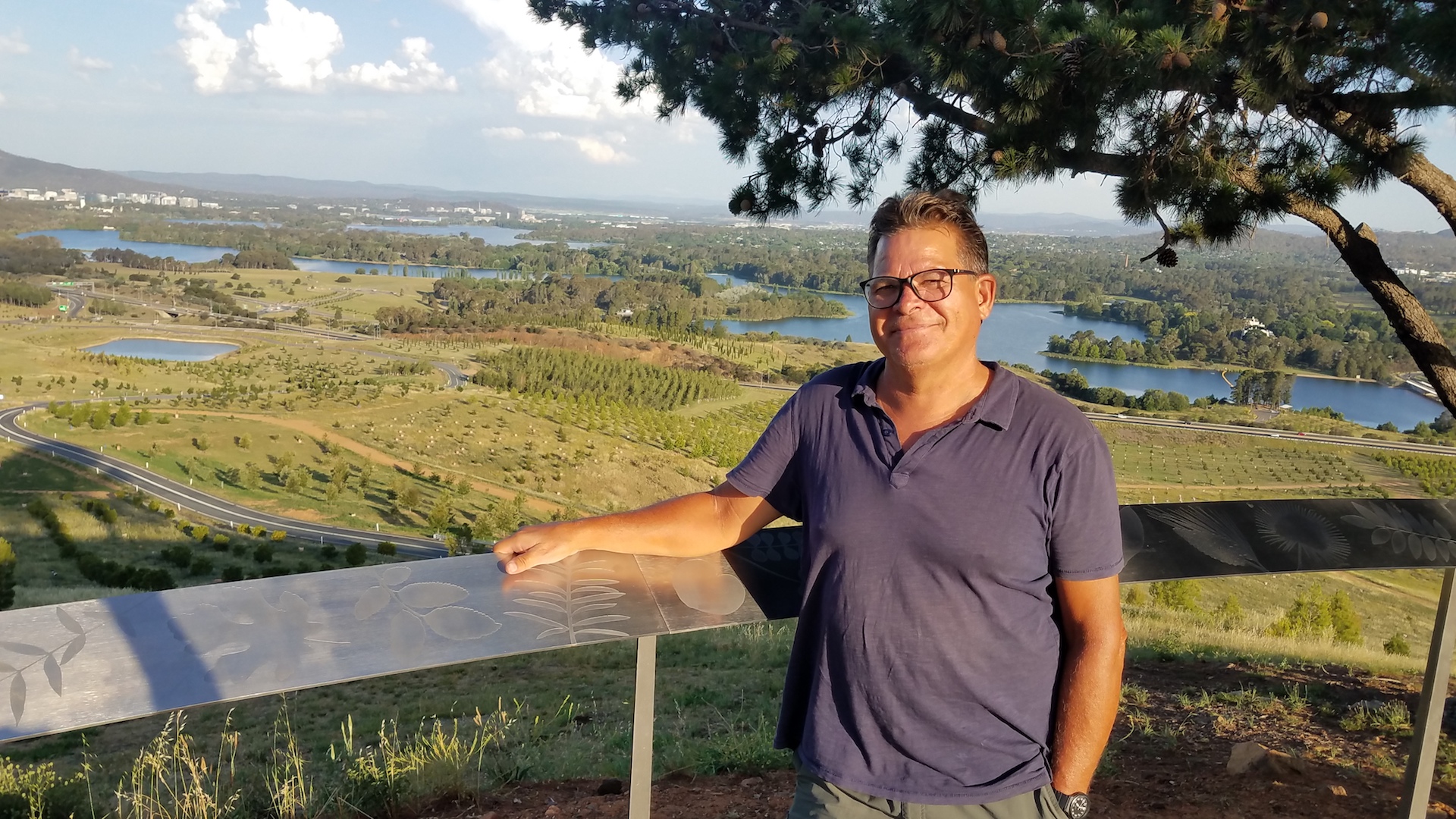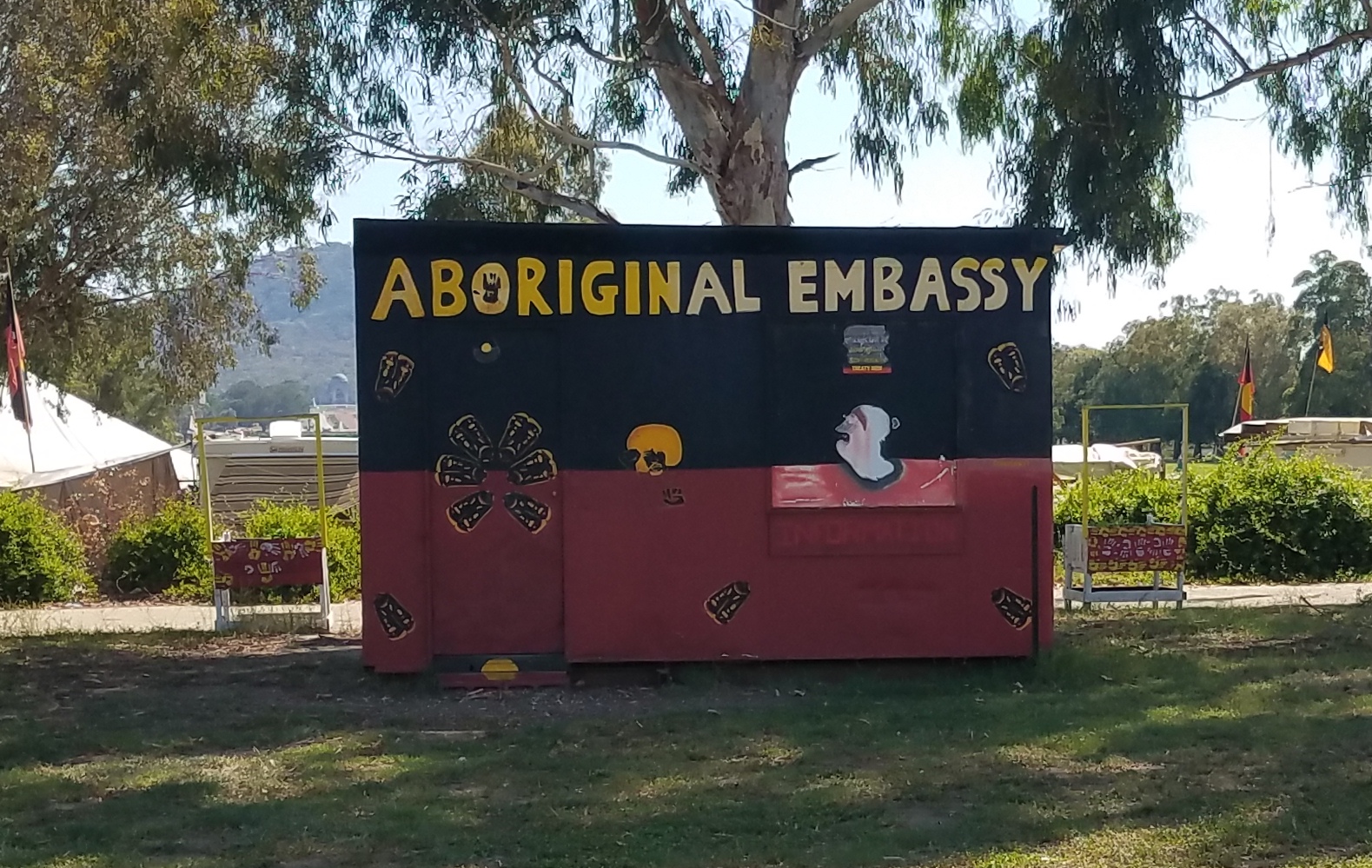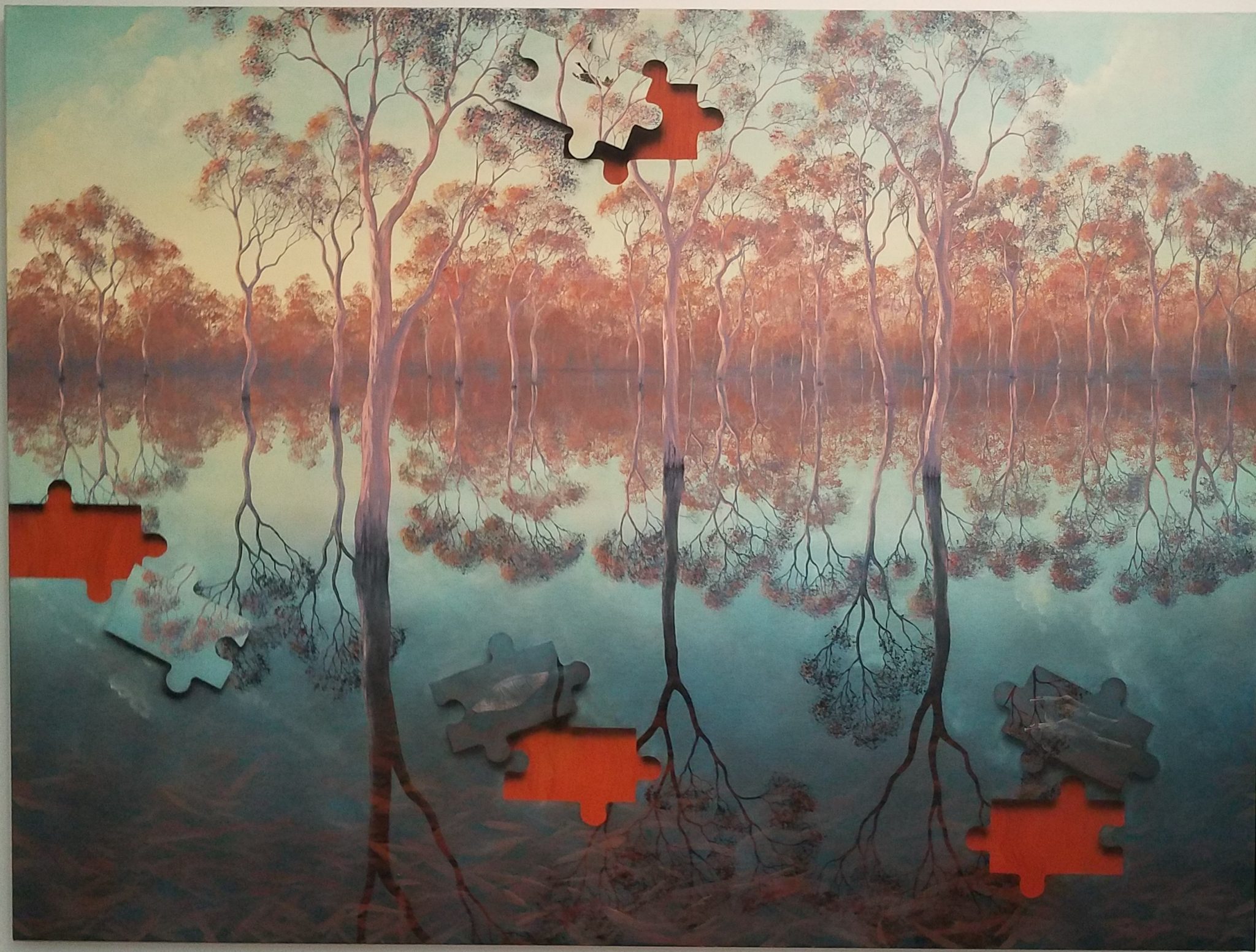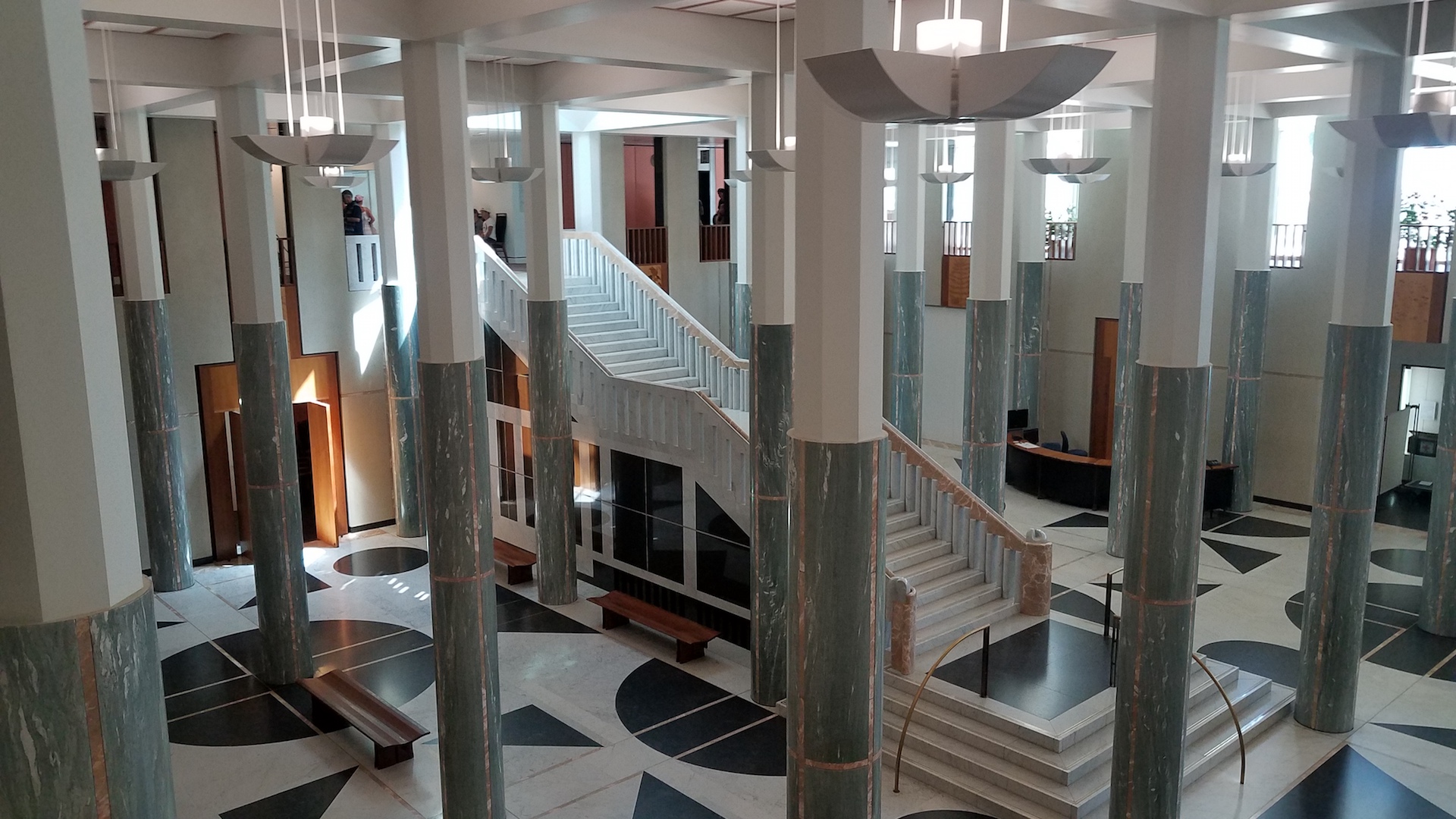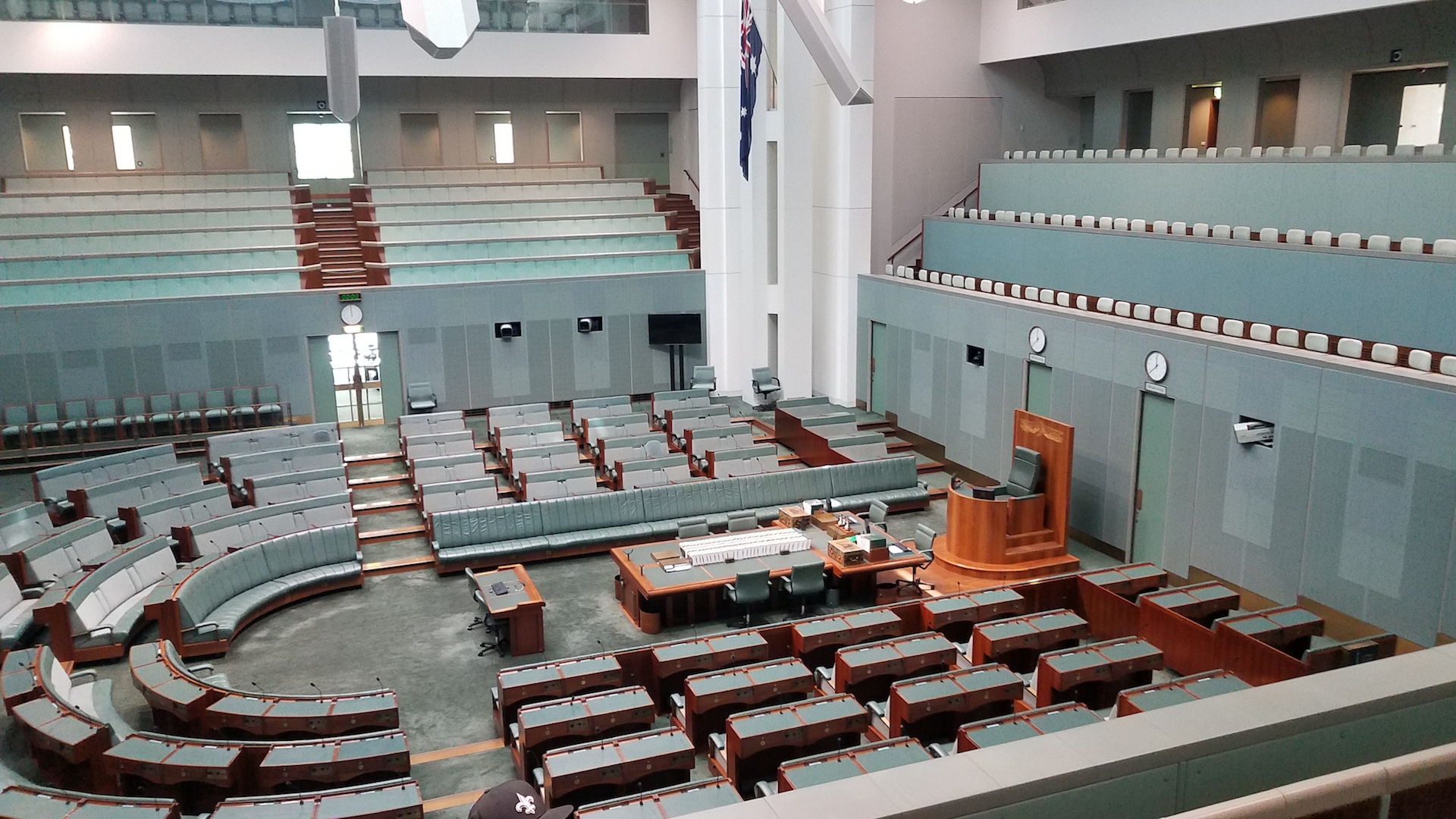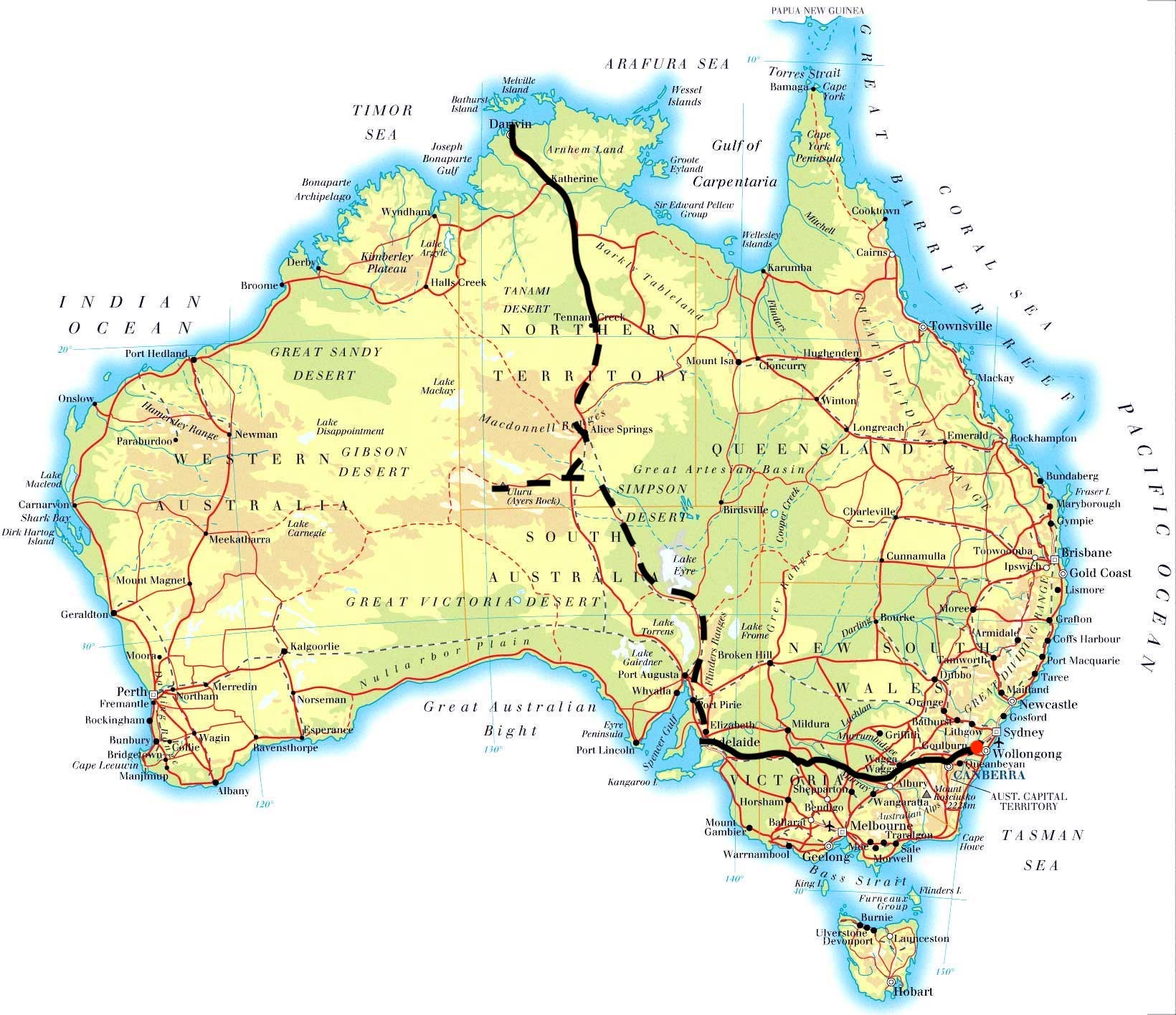Last post I was just heading east into the mountains of the Great Dividing Range.
The Great Dividing Range is Australia’s most substantial mountain range and the third longest land-based range in the world. It stretches more than 3,500 kilometres (2,175 mi) from the northeastern tip of Queensland, running the entire length of the eastern coastline through New South Wales, then into Victoria and turning west, before finally fading into the central plain at the Grampians in western Victoria.
The width of the range varies from about 160 km (100 mi) to over 300 km (190 mi). The Dividing Range does not consist of a single mountain range. It consists of a complex of mountain ranges, plateaus, upland areas and escarpments with an ancient and complex geological history. Included in the range is Australia’s highest peak, Mount Kosciuszko, at 2,228 meters (7,310 ft).
I had a plan that would get me through the mountains, but despite my best efforts, the plan failed. I was going much slower than I thought I could do. I must be getting old. I just can’t grind up the hills like I used to. Instead of 10 kph I was barely making 6. But that was partly due to a tire problem again. I had four flat tires in one day, plus a rain delay. In the late afternoon it was clear I would never get to my planned campsite, which was where the only water nearby was located. Just then a truck stopped and after a quick chat, the couple and their son offered to give me a ride for about 20 km. So I managed to salvage the day by getting a great campsite near a water source. They even gave me a beer. The Australians are the best! Here is the family with their cute little dog.
My campsite in the mountains. Nice and quiet. The flies were mostly gone too.
The next day I rode into the village of Wee Jasper. Not much there, not even water. I had to filter water from the river. But very picturesque.
It was a tough few days. Long steep hills and hot again. But the locals saved me. In two days five people stopped and asked if I needed water or a ride. I got ice from one couple and some cold water from others. After one long tiring day, I again accepted a ride from a couple guys who took me to another campsite by a river where I could get water. I felt like Blanche DuBois.
I finally made it to Canberra and was hosted again by a great warmshowers couple, Declan and Anne. Declan gave me a tour of Canberra one evening. Here are some pix.
They have a great arboretum there with trees planted from all over the world. One day it will be a vast forest. Here is a shot me on the top of the hill in the arboretum with Canberra in the distance.
We also saw the Aboriginal Tent Embassy, which has been there since the 1970s and where residing activists claim to represent the political rights of Aboriginal Australians. It is made up of signs and tents on the lawn opposite Old Parliament House. It is not considered an official embassy by the Australian Government.
I spent three days in Canberra. This gave me time to visit Parliament, The National Art Gallery, and a few museums.
Here is some art from the national art gallery.
Some aboriginal art.
Canberra is the capital of Australia, so it contains the parliament and all the national government apparatus. I took a tour of the Parliament building which was very impressive.
The Australian government was based on the USA model, so they have a house of representatives and a senate. Here is a photo of the chamber where the House of Representatives meets. The greenish color symbolizes the eucalyptus trees indigenous to Australia.
A Better Way to Vote?
One thing I learned on the tour is that Australia elects its representatives based on a system known as preferential voting, or ranked voting. You have probably heard of this before. Instead of just voting for one person, you can vote for several by ranking them 1, 2, 3, etc. So I may have a preferred candidate who I would rank number 1. But there may be another that I feel is not so bad, so I would give them number 2, and so on.
For a single office, like for a mayor or governor, ranked voting helps to elect a candidate more reflective of a majority of voters in a single election even when several viable candidates are in the race. It does this by counting the votes in rounds:
First, every vote counts for its first choice. If a candidate has more than half of the vote based on first-choices, that candidate wins, no votes are transferred. But..if no candidate has more than half of those votes, then the candidate with the fewest first choices is eliminated. The voters who selected the defeated candidate as a first choice will then have their votes added, or transferred, to the totals of their second choice. This process continues until a candidate has more than half of the active votes or only two candidates remain. The candidate with a majority among the active candidates is declared the winner. This video demonstrates the process:
I heard a great podcast about this on Radiolab. If you have an hour or so to spare it is worth a listen:
http://www.wnycstudios.org/story/tweak-vote/
If used in US presidential elections, this voting method would have changed the world dramatically. Take the 2016 US presidential election. There was Trump and Clinton, of course, but also Jill Stein, the Green party’s nominee, and Gary Johnson, the Libertarian party’s nominee, among others. So assuming I was a Jill Stein fan, with our current system, I may not vote for her, knowing she has no chance of winning. If I hated Trump then I would have to vote for Hillary, figuring that at least she has a chance to beat Trump and a vote for Stein would be “wasted.”
But with a ranked voting system I could vote for Stein as my number one choice, then select Hillary as my number 2 choice. Then maybe Johnson 3rd and Trump last. So that when Jill Stein is eliminated my vote still lives on. It is transferred to Clinton. Then when Gary Johnson is eliminated, his votes are transferred to the voter’s number 2 choice. If we assume his votes were split evenly between Trump and Clinton, and all of Stein’s votes went to Hillary, she would have won Pennsylvania, Michigan, and Wisconsin, and we would have a President Clinton, not a President Trump.
And there’s more. In the 2000 presidential election Ralph Nader garnered almost 3 million votes, leading some to believe he was a “spoiler” and took votes from Al Gore, allowing George W. Bush to win the election. In a ranked system, Most Nader fans would have voted Nader #1, but Gore #2, so that when Nader was eliminated his votes would have gone to Gore. This would have been more than enough to give him the presidency.
But wait, there’s still more. In the 1992 US presidential election Ross Perot received almost 20 million votes. In a ranked system, If I was a Perot supporter, I would have voted for Perot #1 but probably would have voted for George H. W. Bush as my 2nd choice, so that when Perot was eliminated most of his votes would have gone to Bush, and Bill Clinton would not have been elected president. Think about that.
So what do you think? Should we change the voting system? Let me know in the comments.
Anyway, back to Australia. I had a good time with my warmshowers hosts, Declan and Anne. They cooked a couple of marvelous dinners, including some delicious pizzas. Here they are making them in their kitchen.
Somehow we started talking about Vegemite so they produced a jar of it and gave me some on a cracker. Vegemite is a thick, black, food spread made from leftover brewers’ yeast extract with various vegetable and spice additives. It was developed by Cyril Percy Callister in Melbourne, Victoria in 1922. It tastes strange but not unpleasant. You can’t eat it straight though, you have to spread it on bread or something.
I finally left Canberra and headed back out into the mountains. The hills were steep but not super tough. But then the weather turned and instead of 90 deg it was 60 deg and rain. My camping plans were disrupted and I was forced to spend a few nights in hotels. Worse, I had to ride on major highways, since the back roads through the mountains were gravel and very steep.
So as I write this I am holed up in a hotel with bad weather forecast for the next four days. I am only 160 km from Sydney but riding in the rain is not an option. I am on a train line though so worst case I can train it to Sydney. In any case it’s down to the last week or so. I leave Australia on Jan. 16. Here is my current position.
That’s it for now. Next stop: Sydney!

